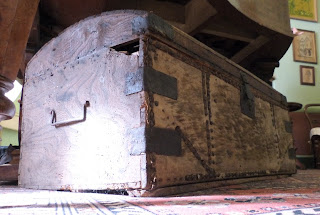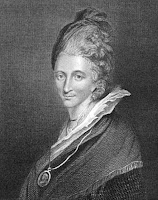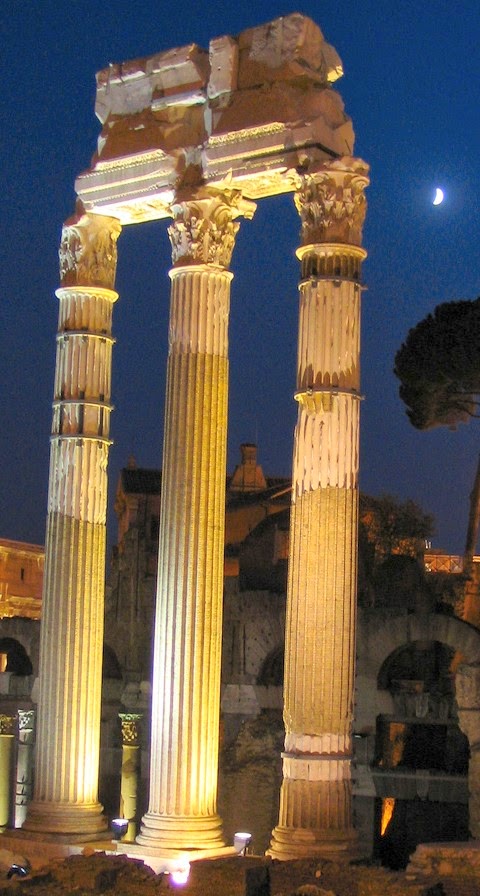The Grand Tour was a period of foreign travel commonly undertaken by gentlemen to finish off their education. It was popular from the mid-17th century until the end of the 18th century when the outbreak of the Napoleonic Wars stopped most foreign travel.
It saw a revival in the early 19th century after peace was restored in Europe. However, as travel became cheaper and easier, and in particular with the advent of the railways, visiting Europe ceased to be the province of the elite; the days of the Grand Tour were over.
It saw a revival in the early 19th century after peace was restored in Europe. However, as travel became cheaper and easier, and in particular with the advent of the railways, visiting Europe ceased to be the province of the elite; the days of the Grand Tour were over.
Who went on the Grand Tour?
The Grand Tour was extremely exclusive and only undertaken by the very rich, mainly the sons of the aristocracy. This was because travel was both difficult and expensive. Travellers carried little money for fear of robbery. Instead, they took letters of credit from their London banks which they then presented in major cities.
An added benefit of sending young gentleman abroad was that they were able to sow their wild oats with as little inconvenience to their families as possible. Typically, the young travellers experienced greater freedom on the continent, and became involved in drinking, gaming and romantic liaisons.
An added benefit of sending young gentleman abroad was that they were able to sow their wild oats with as little inconvenience to their families as possible. Typically, the young travellers experienced greater freedom on the continent, and became involved in drinking, gaming and romantic liaisons.
The “bear leader”
Gentlemen often travelled abroad under the care of a tutor - what Georgette Heyer refers to as a “bear leader”. In her novel, Devil’s Cub, the Marquis of Vidal discovers an English clergyman travelling in France:
“There is a divine, lately passed through Paris, bear-leading some sprig of the nobility. They are bound for Italy.”
Mr Comyn goes on to describe him as
“...a needy divine…who has the good fortune to be in charge of a young gentleman making the Grand Tour.”1
 |
| A trunk for the Grand Tour at A La Ronde |
Originally, the Grand Tour was expected to last about three and a half years: six months of travelling and three years of living abroad, allowing gentlemen to absorb the cultures they were visiting and improve their language skills.
The period of time spent abroad gradually shortened until most travelled for no more than two years.
The period of time spent abroad gradually shortened until most travelled for no more than two years.
Where did they go?
The most popular destination was France as French was the most commonly spoken second language. It was also the easiest place to get to. The fastest crossing was from Dover to Calais and the roads to Paris were very good.
From Paris, travellers usually proceeded to the Alps and then by boat on the Mediterranean to Italy. They would usually visit Rome and Venice but their tour might also include Spain, Portugal, Germany, Eastern Europe, the Balkans and the Baltic.
From Paris, travellers usually proceeded to the Alps and then by boat on the Mediterranean to Italy. They would usually visit Rome and Venice but their tour might also include Spain, Portugal, Germany, Eastern Europe, the Balkans and the Baltic.
Samuel Johnson said:
A man who has not been in Italy is always conscious of an inferiority, from his not having seen what it is expected a man should see.2
 |
| "Campo Vaccino" - the Roman Forum from A New Picture of Rome by Marien Vasi (1824) |
The chief destinations were the great cities of the Renaissance and the remains of classical civilisations, which usually included the excavations at Herculaneum and Pompeii.
Classical statues were very popular, such as the Nile and the Tiber – statues representing river gods – which were discovered in Rome in the 16th century and formed part of the Pope’s collection. They were on display in the Museo Pio-Clementino from the 1770s.
Those on the Grand Tour commonly visited the French and Italian royal families and the British envoys, such as Sir William Hamilton, who was the British ambassador to the court of Naples from 1764 to 1800.
Classical statues were very popular, such as the Nile and the Tiber – statues representing river gods – which were discovered in Rome in the 16th century and formed part of the Pope’s collection. They were on display in the Museo Pio-Clementino from the 1770s.
Those on the Grand Tour commonly visited the French and Italian royal families and the British envoys, such as Sir William Hamilton, who was the British ambassador to the court of Naples from 1764 to 1800.
One of the aims of the Grand Tour was to give gentlemen an aesthetic education. It was desirable to have an interest in French and Italian art. Travellers typically came home with crates full of souvenirs that they had collected, such as paintings, sculptures and fine clothes. Canaletto, Vernet and Panini all painted for the 18th century tourist market.
It was also fashionable to have your portrait painted, usually at the end of the Tour. Pompeo Batoni (1708-1787) painted over 175 portraits of travellers in Rome.
Did women go on the Grand Tour?
Although the Grand Tour was predominantly undertaken by gentlemen, a number of ladies also travelled abroad. The blue-stocking Hester Piozzi was particularly well-known for her travels in the 1770s and 1780s.
It was also fashionable to have your portrait painted, usually at the end of the Tour. Pompeo Batoni (1708-1787) painted over 175 portraits of travellers in Rome.
Did women go on the Grand Tour?
Although the Grand Tour was predominantly undertaken by gentlemen, a number of ladies also travelled abroad. The blue-stocking Hester Piozzi was particularly well-known for her travels in the 1770s and 1780s.
 |
| Hester Piozzi from The Life of Samuel Johnson by James Boswell (1831) |
Women who were separated or divorced from their husbands often travelled abroad as they were more readily accepted on the continent. Georgiana, Duchess of Devonshire, went into exile abroad after becoming pregnant with her lover’s child in the early 1790s, whilst Caroline, Princess of Wales, travelled abroad from 1814 to 1820.
A group of women including Jane Parminter and her cousin Mary undertook the Grand Tour in the 1780s. When they returned in 1795, they built the sixteen-sided house, A la Ronde, in Exmouth to remind them of their travels and display their mementoes including several Bartolozzi prints and a shell picture.
A group of women including Jane Parminter and her cousin Mary undertook the Grand Tour in the 1780s. When they returned in 1795, they built the sixteen-sided house, A la Ronde, in Exmouth to remind them of their travels and display their mementoes including several Bartolozzi prints and a shell picture.
 |
| A La Ronde, Exmouth, now owned by the National Trust |
Rachel Knowles writes clean/Christian historical romance set in the time of Jane Austen. She has been sharing her research on this blog since 2011. Rachel lives in the beautiful Georgian seaside town of Weymouth, Dorset, on the south coast of England, with her husband, Andrew.
Find out more about Rachel's books and sign up for her newsletter here.If you have enjoyed this blog and want to encourage me and help me to keep making my research freely available, please buy me a virtual cup of coffee by clicking the button below.
Notes
(1) Devil's Cub by Georgette Heyer (1932), a Georgian romance.
(2) A journal entry dated 11 April 1776 in James Boswell’s Life of Samuel Johnson (1831), volume 3.
Sources used include:
Boswell, James, The Life of Samuel Johnson LL.D, with new additions by John Wilson Croker (1831)
Foreman, Amanda, Georgiana, Duchess of Devonshire (HarperCollins, 1998, London)
Franklin, Michael J, Piozzi, Hester Lynch (1741-1821) Oxford Dictionary of National Biography (Oxford University Press, 2004; online edn Jan 2008, accessed 6 Oct 2012)
The National Trust, A la Ronde guidebook
Vasi, Marien, A New Picture of Rome and its environs, in the form of an itinerary (1824)
National Gallery website on The Grand Tour
The Grand Route – BBC Radio 4 programme
All photographs ©Regencyhistory.net
(1) Devil's Cub by Georgette Heyer (1932), a Georgian romance.
(2) A journal entry dated 11 April 1776 in James Boswell’s Life of Samuel Johnson (1831), volume 3.
Sources used include:
Boswell, James, The Life of Samuel Johnson LL.D, with new additions by John Wilson Croker (1831)
Foreman, Amanda, Georgiana, Duchess of Devonshire (HarperCollins, 1998, London)
Franklin, Michael J, Piozzi, Hester Lynch (1741-1821) Oxford Dictionary of National Biography (Oxford University Press, 2004; online edn Jan 2008, accessed 6 Oct 2012)
The National Trust, A la Ronde guidebook
Vasi, Marien, A New Picture of Rome and its environs, in the form of an itinerary (1824)
National Gallery website on The Grand Tour
The Grand Route – BBC Radio 4 programme
All photographs ©Regencyhistory.net




Recently picked up a copy of Piozzi's 'Observations and reflections made in the course of a journey through France, Italy, and Germany' (vol. II, London, 1789) in a car boot sale for £4.00 two years go. A bit battered, but a great find!
ReplyDeleteWow! The wonder of car boot sales - what a great find. :)
DeleteWonderful post. I tweeted.
ReplyDeleteWonderful post. I tweeted.
ReplyDeleteGreat post about a subject I'm researching for the novel I'm writing. Thank you!
ReplyDeleteGlad you found it useful. Wouldn't it be nice to go on a Grand Tour? For research purposes of course!
Deleteor maybe just to sow some wild oats, we need to save the environment afterall!
DeleteNice
ReplyDeleteWonderful article, very well researched. I just found this website and am enjoying it very much. In addition I bought your novel! I've had difficulty finding historical fiction that's historically accurate, so I'm looking forward to reading it!
ReplyDeleteThank you very much. I hope you enjoy A Perfect Match. The sequel is written and with my beta reader and I'm hoping will be published in the autumn.
Deletevery very helpful article. really helped me with my assignment on The Grand Tour for my Graduation program. very simple words used to explain no jargon used. thank you so much
ReplyDeletemay i please learn about the grand tour being linked to Switzerland please
ReplyDeleteIf a gentleman had come of age during the Napoleonic Wars, would his Tour be delayed until they had ended, or would he never go on one?
ReplyDeleteThe heyday of the Grand Tour came to an end with the Napoleonic Wars. People flocked to the continent during the rare times of peace but travel was difficult at other times.
Delete